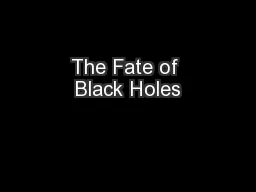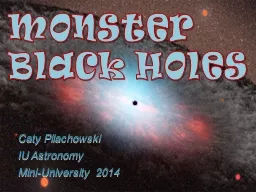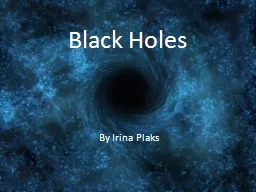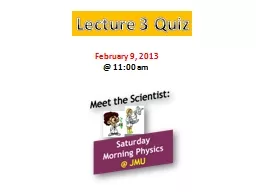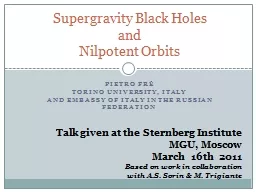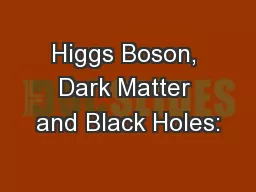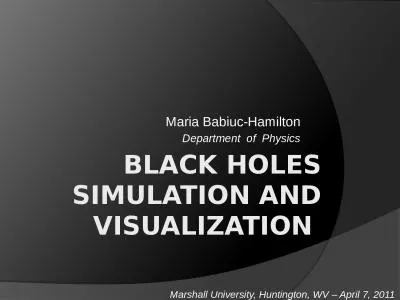PPT-The Fate of Black Holes
Author : myesha-ticknor | Published Date : 2017-08-06
The Obvious Question Once matter enters a black hole is it fated never to reappear The answer seemed obvious a clear yes until about forty years ago Oops
Presentation Embed Code
Download Presentation
Download Presentation The PPT/PDF document "The Fate of Black Holes" is the property of its rightful owner. Permission is granted to download and print the materials on this website for personal, non-commercial use only, and to display it on your personal computer provided you do not modify the materials and that you retain all copyright notices contained in the materials. By downloading content from our website, you accept the terms of this agreement.
The Fate of Black Holes: Transcript
Download Rules Of Document
"The Fate of Black Holes"The content belongs to its owner. You may download and print it for personal use, without modification, and keep all copyright notices. By downloading, you agree to these terms.
Related Documents

